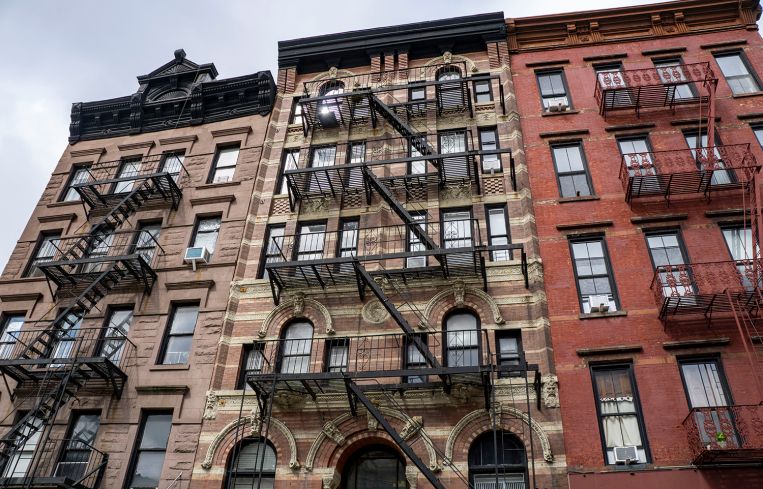Manhattan vs. the Boroughs: Where the Smart Multifamily Money Is Going in `25
By Lev Mavashev February 12, 2025 6:23 am
reprints
As New York City’s multifamily market rebounds from years of turbulence, investors are changing their focus in ways we haven’t seen in over a decade.
The latest data from Alpha Realty’s Q4 2024 multifamily market report reveals a clear trend: While Manhattan remains a prime investment target, Brooklyn, Queens and even the Bronx are seeing unprecedented transaction activity. Investors, both private and institutional, are adjusting their strategies based on asset size, rental growth potential, and pricing differentials.
The question is: Where’s the smart money going in 2025?

For years, Manhattan has been synonymous with trophy assets, megadeals and institutional dominance. But the Q4 data suggests a shift. Transaction volume surged by 54.7 percent in 2024 — proving that Manhattan is still highly liquid. However, total dollar volume dropped 21.2 percent, reflecting a decline in average deal size.
This trend underscores a move away from large-scale multifamily properties toward smaller, more manageable assets, as buildings under 20 units saw an 82.6 percent increase in transaction volume last quarter. These smaller properties offer a balance between scale and stability, making them attractive to both private capital and boutique institutional investors.
Another key factor driving Manhattan’s multifamily market is the return of international capital. Transactions such as the sale of 210-220 East 22nd Street in Gramercy Park for $104.5 million to a Japanese firm show that core assets in prime neighborhoods are in demand. Manhattan’s cash flow consistency and market rent growth are top priorities for international investors.
If there is one borough that stole the show last quarter, it’s Brooklyn. The numbers speak for themselves: a 109.8 percent increase in total dollar volume, reaching $543.5 million, despite a quarter-over-quarter dip. Investors were particularly drawn to small and midsize properties, with buildings that had fewer than 10 units accounting for 85 transactions last quarter, up 49.1 percent annually.
Strong rent growth is fueling the surge. Brooklyn rents hit an all-time high, averaging $3,950 per month, outpacing many national urban markets. Also, international buyers are expanding beyond Manhattan. A recent $202.5 million deal for 80 Dekalb Avenue in Fort Greene proves that foreign capital is flowing into Brooklyn’s high-end rental market.
Finally, Brooklyn’s pricing is favorable compared to Manhattan’s. While Manhattan’s cap rates hover in the 5.25 to 5.5 percent range, Brooklyn offers slightly higher yields, particularly in emerging neighborhoods like Bed-Stuy and Crown Heights, where cap rates hover in the 6.5 to 6.75 percent range
With a growing young professional population and a limited supply of new development, Brooklyn remains one of the safest bets for long-term appreciation.
Meanwhile, Queens is no longer just an affordable alternative — it’s a hotbed for multifamily investment, especially for larger assets. Total units sold jumped 91.5 percent last quarter, showing a clear demand for high-density properties. Investors are taking advantage of the borough’s relative affordability, with properties of at least 20 units seeing an 80 percent increase in transaction volume last year.
One of the biggest trends in Queens is the re-emergence of larger deals with local private investors, particularly in transit-oriented submarkets like Astoria and Jamaica. Recent high-profile transactions include the 192-unit 40-40 79th Street selling for $18 million and the 51-unit 88-56 162nd Street going for $18.8 million.
Queens’ appeals to local private investors are mainly due to its strong rental fundamentals, as well as its lack of competition from institutional investors, relative to Manhattan and Brooklyn.
Finally, though historically viewed as the “tertiary” market of NYC, the Bronx is seeing renewed interest from private capital, mainly from local family offices and private investors. While total dollar volume slightly declined last quarter, the market still posted a 38.2 percent annual increase in transaction activity, signaling renewed long-term investor confidence.
The biggest Bronx trend? Value-add opportunities. Investors are targeting rent-stabilized buildings at steep discounts, banking on future regulatory policy shifts or a market cap rate compression.
While the Bronx lacks the institutional buyer presence of Manhattan, Brooklyn or Queens, private capital and local syndicators are actively acquiring distressed rent-stabilized assets, betting on long-term gains.
So, the final verdict on where investors should be looking?
For long-term appreciation, Brooklyn remains the top choice, offering strong rent growth and value appreciation from the ever-expanding interest from institutional capital. For discounted acquisitions and value-add potential, the Bronx provides unique buying opportunities for those willing to navigate regulatory complexities. For stability and liquidity, Manhattan still commands premium pricing, especially now with smaller buildings becoming more attractive.
As we transact in 2025, the NYC multifamily market is more dynamic than ever. The divergence in investment strategies across boroughs presents opportunities for every type of investor, from institutional players to private buyers looking to capitalize on the shifting landscape. The smart money is already making moves with its capital. Where will yours go?
Lev Mavashev is founder and principal of Alpha Realty, a New York brokerage focusing on multifamily.



